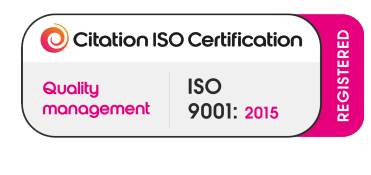Businesses have always had to adapt to technological changes, and the coming PSTN switch-off on January 31, 2027, is no different. As thousands of businesses use this older, wire-based system, its shutdown will impact all of them. However, it is not a reason to be worried but a chance to prepare yourself by taking the necessary steps.
There are many reasons to be optimistic: PSTN’s replacement in the form of VoIP (Voice over Internet Protocol) will make communications smoother and more reliable. It is a much better alternative that enables unprecedented scalability with features like video conferencing, collaboration tools, and more.
If you are a business navigating this change, we will help you understand what the PSTN switch-off means. Reading this guide will give you a clear path to move from PSTN to the new VoIP system smoothly.
What is the PSTN Switch-Off?
The older copper-based PSTN infrastructure is being replaced by a newer and better all-IP network for communications. The traditional phone lines will no longer work, and you’ll be making all of your calls on the internet with VoIP technology. There is more than one reason why PSTN switch-off is happening:
- PSTN is an obsolete system that is costly to maintain.
- There has been a consistent decline in the usage of PSTN, as people mostly use online messaging and video calling.
- The switch to IP-based communication will integrate voice, data, and video services for more efficient communication.
How Can Your Business Prepare for the PSTN Switch-Off?
Let us get to the essence of the matter: How can your business navigate this change if it is using PSTN and make sure that you switch to VoIP technology? You need to take action as soon as possible to avoid any disruption to your business activities.
Here are a few tips that can help you handle the PSTN switch-off with ease:
1. Plan Ahead of the Switch
Going ahead with the VoIP project without due diligence can be detrimental to your business. It can result in poor implementation, subpar staff training, and more.
The first thing you need to do is allocate the budget to the new system, including the startup costs, various features, and the infrastructural changes you’ll make. There are countless VoIP providers promising to transform your business communication, but you should only pick one that fits your budget and offers all the features you need.
Once you have decided to switch and created a clear plan, it is time to determine what features you’ll need. The following are the ones that businesses usually rely upon:
- Conferencing
- Call recordings
- CRM integration
- On-hold music
Many businesses are already switching to VoIP. After all, it is one of the 7 customer facing technologies to give you an advantage.
2. Invest in the Right VoIP Hardware
Now that you know which features your business needs, it is time to explore the equipment that’ll make VoIP communication possible.
Traditional phones are pretty limited, as they only allow voice calling. On the contrary, VoIP-enabled devices take communication several notches above with features like voice mail, touchscreen interfaces, Bluetooth compatibility, and more.
3. Is Your Internet Good Enough?
VoIP uses the internet for all communication, so reliable speeds are essential. Many businesses face communication challenges, with 83% of them having lost a customer or missed a major deadline because of the connectivity problem. You certainly don’t want an unreliable internet connection to put you in a similar situation.
A common rule of thumb is that each established line should have 100 kbps (or 0.1 Mbps) allotted over a wired broadband connection. If you have ten lines, the internet speed should be 1 Mbps.
Make sure that both download and upload speeds meet this minimum requirement. You can opt for a fibre-optic connection, a business-class cable, a DSL, or Wi-Fi. Test the internet connection to know if it is fast enough and maintains its speed throughout the day. If it’s inconsistent, install another connection before you implement VoIP to avoid communication discrepancies.
4. Train Your Staff
Change is always a bit unsettling for employees, especially when it involves a new technology. Train your employees on various aspects of the VoIP system before you implement it. The key staff members should understand the details of both software and hardware:
- The IT team should know how the new system integrates with the network.
- The data analytics team needs to understand the CRM and analytics of the new system.
- You might also need to restructure the IT team, like appointing a manager for the new VoIP system.
- Once you are confident that your teams have a solid grasp of VoIP, implementing it becomes much easier.
Key Benefits of VoIP for Businesses
As PSTN nears its end, businesses will rapidly deploy VoIP systems in the coming years. It is forecasted that this adoption will result in a growth of $4.3 billion in the VoIP sector from 2023 to 2028.
Let’s overview the exciting opportunities VoIP promises for your business:
- More reliable, smoother, and faster communication.
- Lower maintenance costs as the infrastructure will be mostly digital.
- Enhanced scalability with the option to add or remove lines.
- Flexible remote working environment, as the VoIP system can work anywhere with an internet connection.
- Several features enhance business communication, such as on-hold music, conferencing, call recording, CRM integration and the like.
- Significant cost savings on long-distance and international calls.
Enter the New Era of Business Communication With Rejuvenate IT
PSTN switch-off will be completed in January 2027, but you can stay ahead of the curve by switching to VoIP today. Making a move now will give you more time to train your teams to better adapt to the new technology.
If you are based in the South West, Rejuvenate is ready to handle this crucial transition. The best part is that you can port your existing numbers to the new platform. Our hosted VoIP service uses next-gen IP technology and brings useful features like conferencing, professional recordings, hunt lists, on-hold music, and so much more. In addition, our experienced team monitors the service 24/7 and is ready to resolve any issue you face.
The sooner you make the move, the better your chances of thriving in the post-PSTN era. Contact us today, and let us help you transition to our reliable VoIP system.












